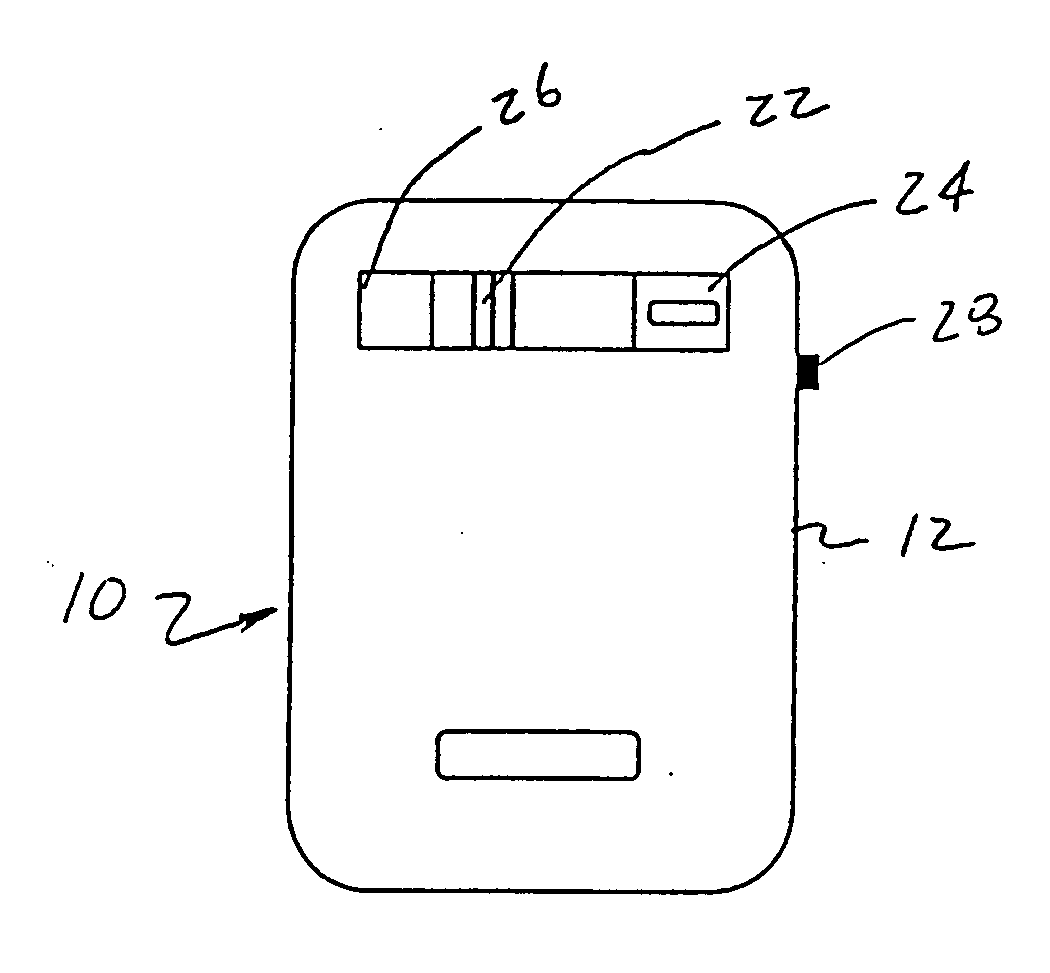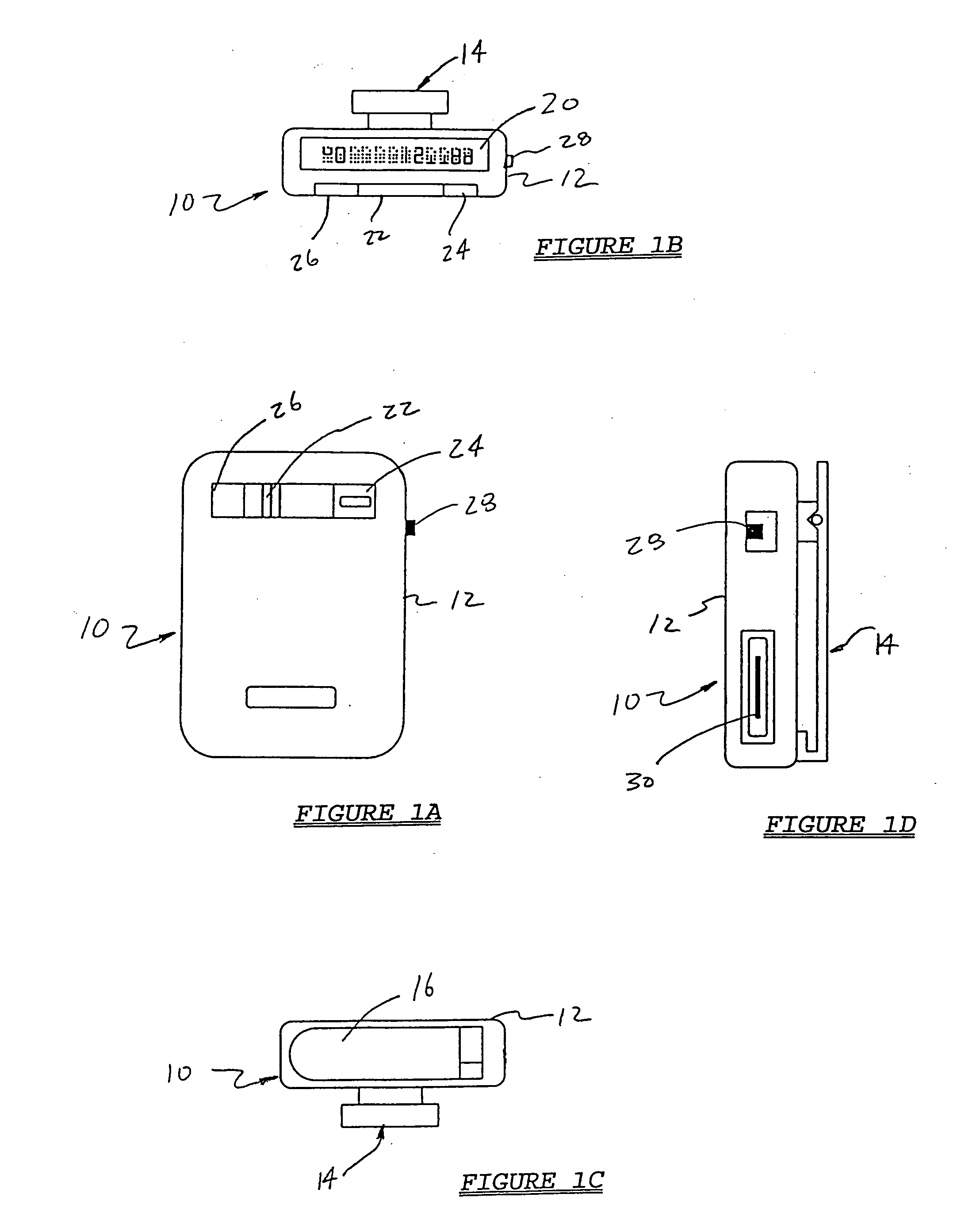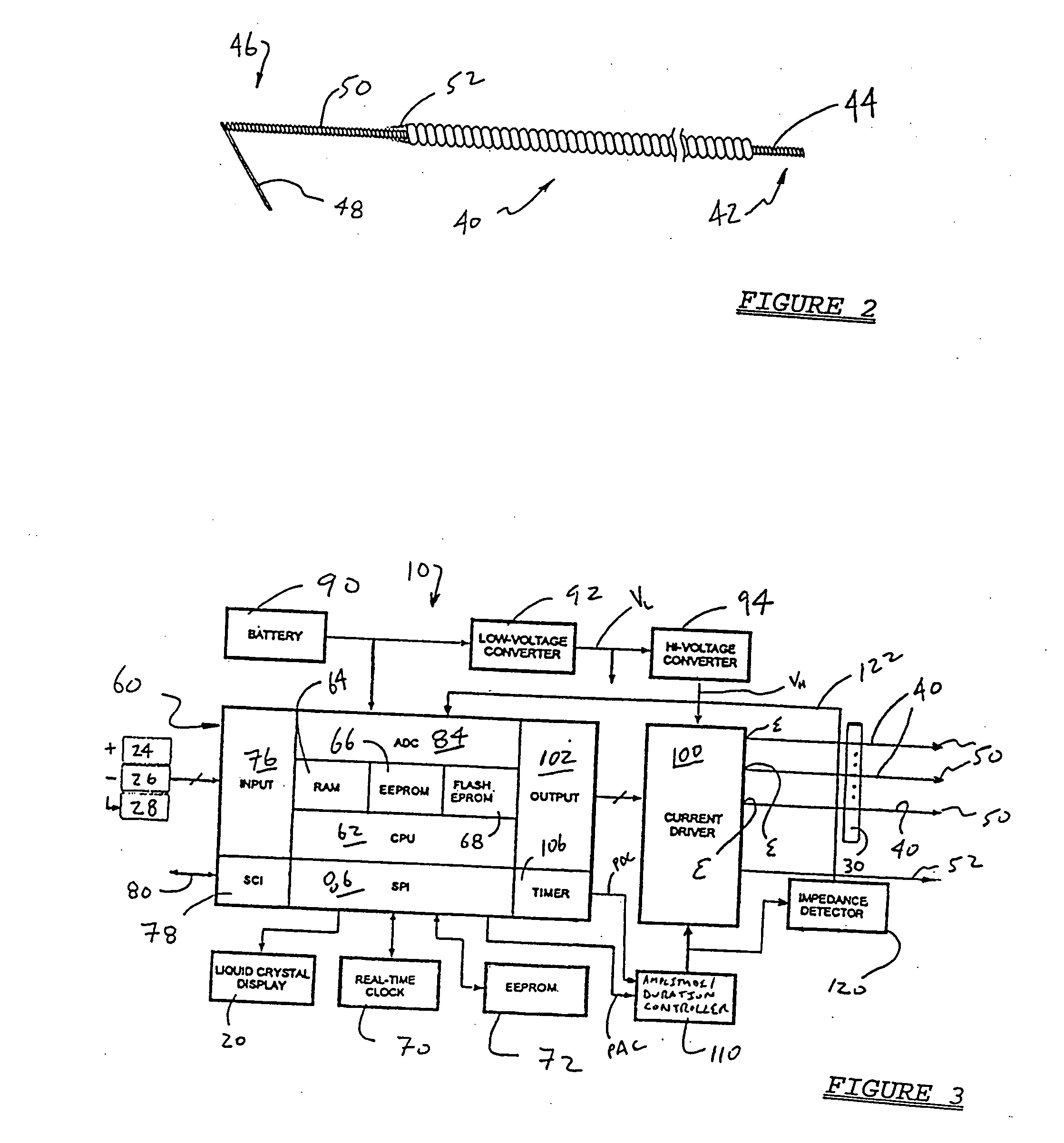Percutaneous intramuscular stimulation system
a percutaneous intramuscular stimulation and muscle technology, applied in electrotherapy, physical therapy, artificial respiration, etc., can solve the problems of chronic and debilitating pain, impaired rehabilitation, and poor motor recovery, so as to maintain muscle range-of-motion, facilitate voluntary motor function, and reduce pain
- Summary
- Abstract
- Description
- Claims
- Application Information
AI Technical Summary
Benefits of technology
Problems solved by technology
Method used
Image
Examples
Embodiment Construction
[0028] With reference to FIGS. 1A-1D, the percutaneous, intramuscular stimulation system in accordance with the present invention includes an electrical stimulation pulse generator 10. The pulse generator 10 includes a lightweight, durable plastic housing 12 fabricated from a suitable plastic or the like. The case 12 includes a clip 14 that allows the pulse generator 10 to be releasably connected to a patient's belt, other clothing, or any other convenient location. The case 12 also includes a releasable battery access cover 16.
[0029] For output of visual data to a patient or clinician operating the stimulation system, a visual display 20 is provided. The display 20 is preferably provided by a liquid crystal display, but any other suitable display means may alternatively be used. An audio output device, such as a beeper 22 is also provided.
[0030] For user control, adjustment, and selection of operational parameters, the stimulation pulse generator 10 includes means for input of da...
PUM
 Login to View More
Login to View More Abstract
Description
Claims
Application Information
 Login to View More
Login to View More - R&D
- Intellectual Property
- Life Sciences
- Materials
- Tech Scout
- Unparalleled Data Quality
- Higher Quality Content
- 60% Fewer Hallucinations
Browse by: Latest US Patents, China's latest patents, Technical Efficacy Thesaurus, Application Domain, Technology Topic, Popular Technical Reports.
© 2025 PatSnap. All rights reserved.Legal|Privacy policy|Modern Slavery Act Transparency Statement|Sitemap|About US| Contact US: help@patsnap.com



